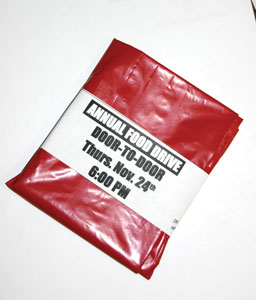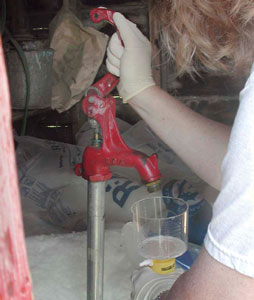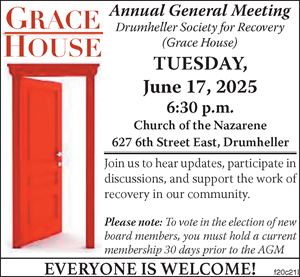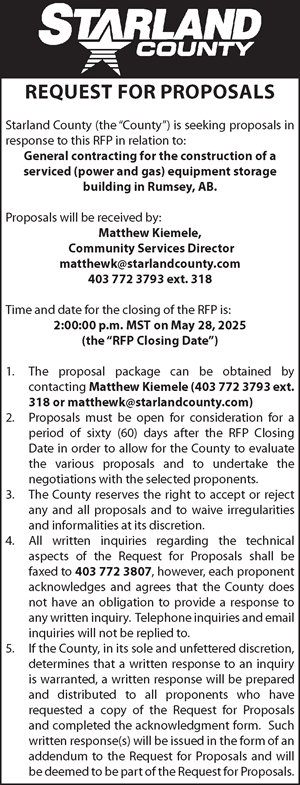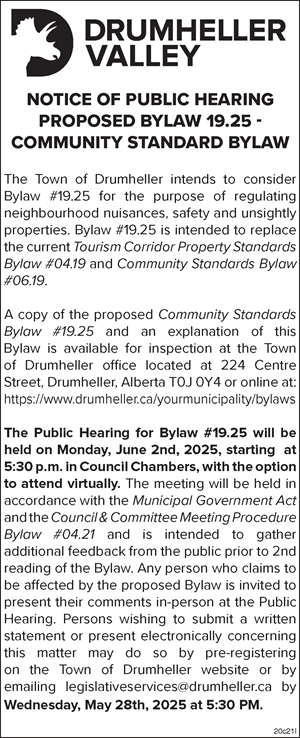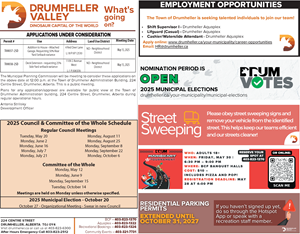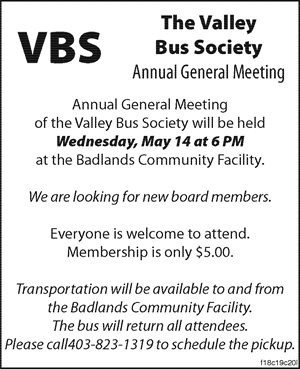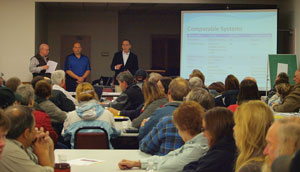
Residents of East Coulee and Lehigh met with members of Town Council and administration on November 9 to discuss plans to bring municipal water to their neighbourhoods.
Before the meeting began, residents had the opportunity to speak one on one with the town’s delegation and view posters outlining the water lines. At 6:30 p.m. the town gave a presentation outlining the two independent water improvement projects.
The first project is the construction of a water transmission line from Cambria to the western edge of East Coulee. The total cost of the project is $4.3 million, with 90 per cent of the funding for the project coming from the provincial government through the Water for Life grant. The remaining 10 per cent of the cost would be paid for by the town, specifically by water utilities.
The second project would bring the water lines into East Coulee and Lehigh. The cost for the second project is estimated to be $3.2 million dollars. Residents of the two communities would be responsible for the whole amount through a water improvement tax.
The total payment per connection is estimated at $15,614.34, or $90.04 per month for 20 years. Grants would be available to seniors to help pay for the improvements.
The water distribution lines would run under the streets, to the edge of each property line. Fire hydrants would be distributed throughout both neighbourhoods.
The benefits, as stated in the presentation, would be that each neighbourhood would have a secure, high quality water source, fire protection, increased growth, and reduced insurance payments.
Afterwards, residents were given an opportunity to ask questions of the delegation.
Criticisms of the proposal were that insurance payments would not decrease by much and residents would begin paying water utilities on top of the monthly improvement tax.
In addition to the water improvement tax, residents would be responsible for bringing the water lines from the edge of their property into their homes. Homeowners would need to hire contractors to do the work. The town would give only two years for each owner to hook up to the water distribution lines.
There were concerns raised regarding the quality of Drumheller water as well. During the meeting of the Committee of the Whole on Monday, November 14, council members and administration wished to alleviate any fears about water quality. The water that East Coulee and Lehigh residents would receive would travel through new pipes and the issues that have occurred with Drumheller are no longer a concern. The quality of municipal water in Drumheller exceeds provincial standards.
Some residents were concerned the project was going through regardless of their desires. However, Mayor Terry Yemen assured residents the plan would only happen with the consent of those affected.
The general consensus amongst the communities is they would be glad to have municipal water, but the cost is too high. The mood from the meeting was that residents were not in favour of the proposal.
“I’ve received a number of emails from people at the meeting who didn’t speak out saying they would like the water,” said Mayor Terry Yemen. “But they asked if there was any way to lower the cost.”
“We have been lobbying the provincial government to extend the transmission line to the east end of East Coulee, that would help lower the cost,” continued Mayor Yemen. “So far we’ve been unsuccessful, but we need the support of East Coulee and Lehigh to lobby the government too.”
The Town of Drumheller will soon send out letters to all residents asking for further information from residents, for example if they would want water and at what cost.
Along with the survey, the residents potentially affected would receive a detailed summary of the pertinent information. The goal being to help residents answer all of their questions and concerns.
“The information would help council make an informed decision,” said Mayor Yemen.
Regardless of the response by residents, the water transmission line between Cambria and East Coulee will still go ahead. Work should proceed through the spring and summer of 2012.
